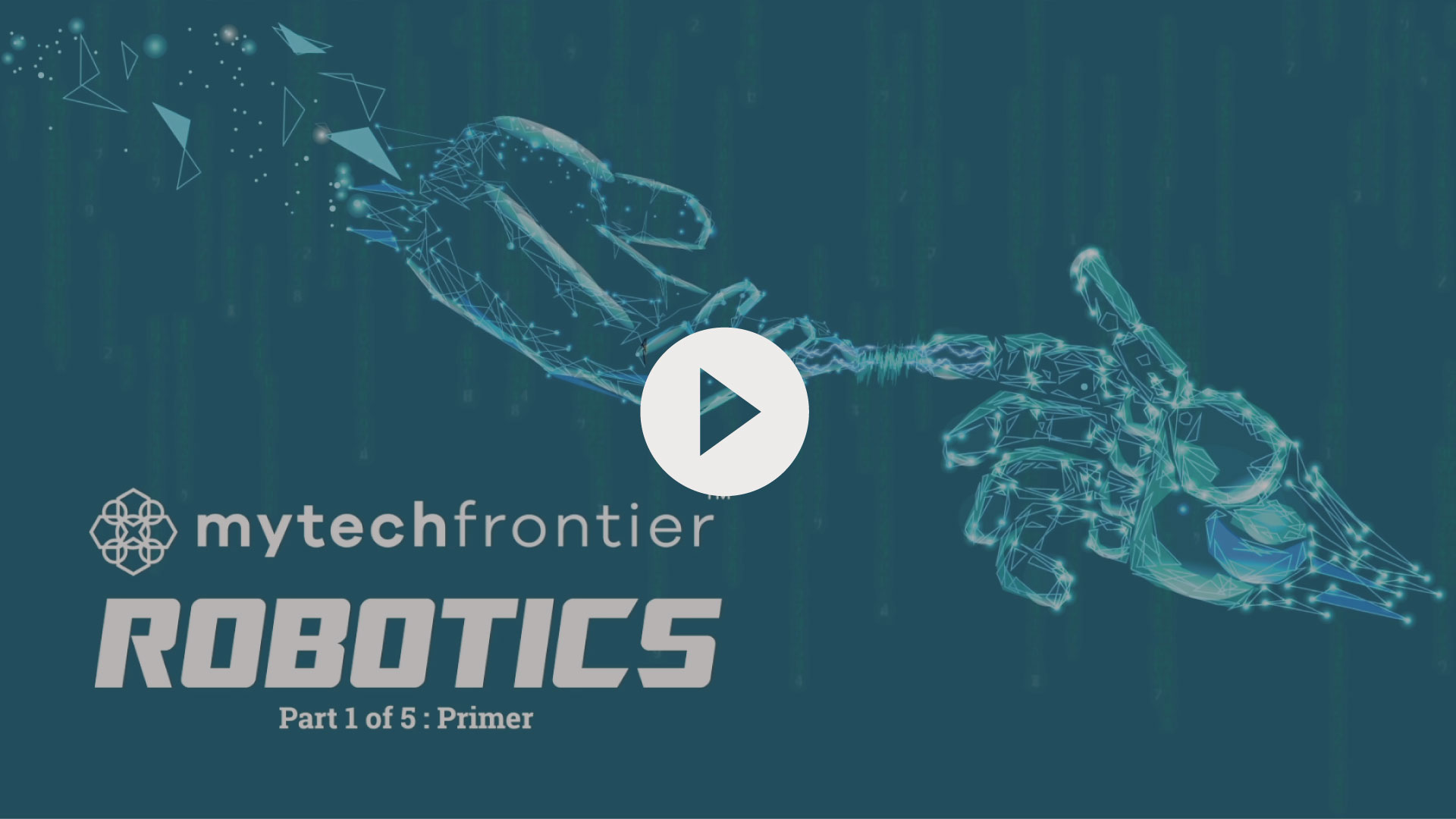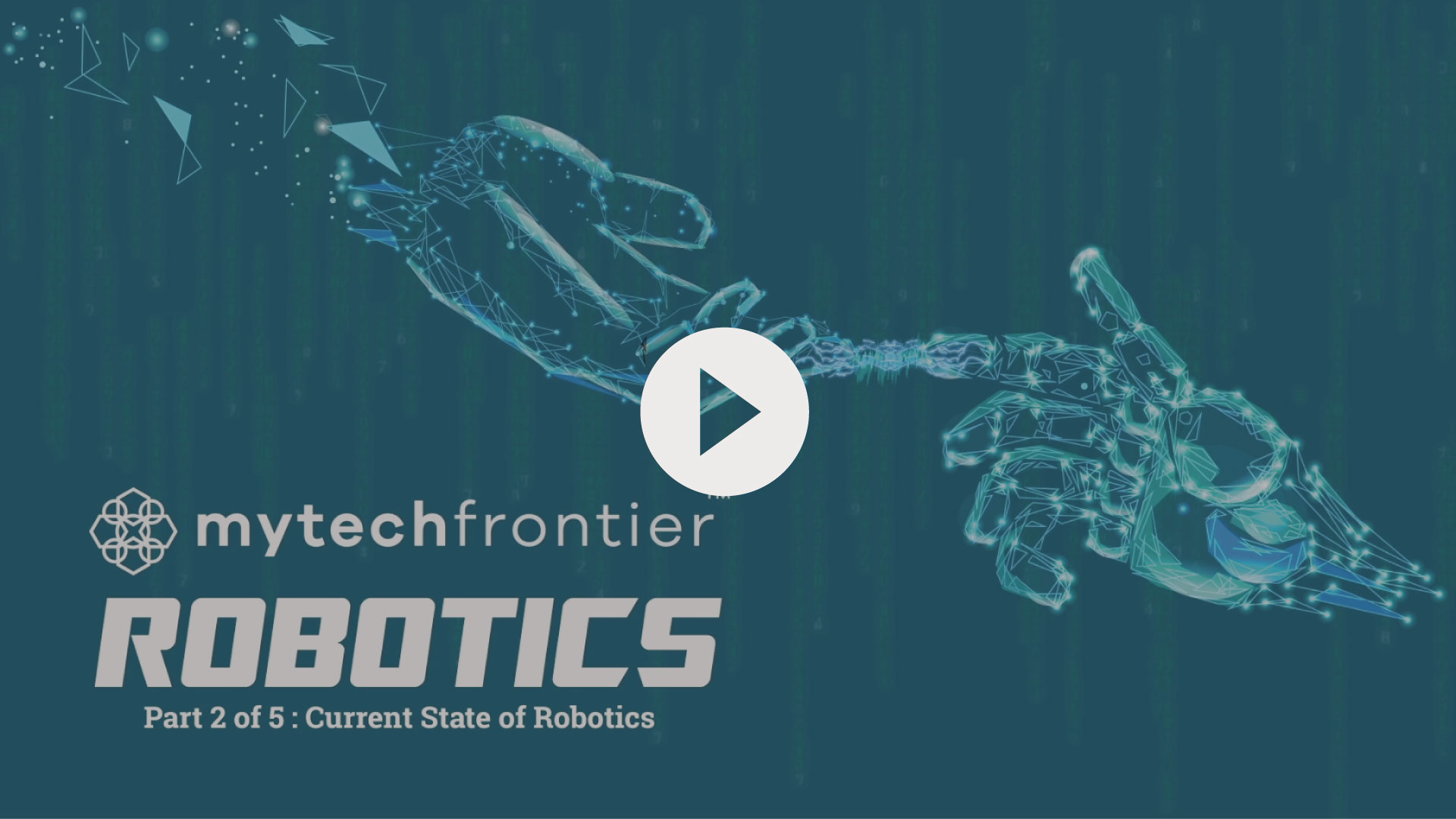
Although robotics is not new, the underlying technology and its capabilities have significantly evolved over the years.

- The concept of 'Robot' was first introduced almost a century ago, and it has since been a subject of public discussion and fascination.
- In the 1950s[1], businesses had already begun to adopt and explore basic robotic applications.
- In the subsequent decades, academic[2] and corporate research institutions[3] across the world continued to invest and innovate on the design, construction, operation and use of robots.
- Since the 2000s[4], the advancements in the field of autonomous vehicles, robotic hardware, sensing technologies and artificial intelligence has expanded the scope and scale of robotic capabilities. And, it has boosted the range of commercially available robotic applications
- As of early 2020, businesses across a broad range of verticals have deployed or are actively exploring the use of robotics.

Robotic applications rely on a complex array of software and hardware components to function efficiently.

- Robot is a popular word yet defining ‘robotics’ or ‘robots’ is tricky, as the terms are used to refer to a variety of technologies. Also, the expectation and scope of robotics seems to evolve with the advancements in technology and capabilities.
- Robotics refers to the study and development of programmable machines or systems (i.e. robots) that have a physical presence. In addition, robots have the capabilities to sense the environment, and to assimilate and evaluate the sensory data, and also the ability to perform tasks autonomously or semi-autonomously[5].
- Software bots or software robotics that refer to AI-powered software programs that target to automate virtual or manual tasks are not included in the scope of Robotics as these bots don’t exist in the physical world[6]. Remote-controlled machines (e.g., toy drones) are also not classified as robots as they are not geared to perform tasks autonomously or semi-autonomously.

Robotic applications rely on a complex array of software and hardware components to function efficiently.

-
Roboticists equip robots with multiple sensors to gather external and internal data, essential for efficiently operating the robots. For example, vision sensors such as LIDAR and cameras, allow robots to detect objects and form real-time maps of their surroundings. Other sensors enable robots to measure physical properties such as heat, presence of hazardous gases, light or sounds.
- Reduction in sensor prices and improved sensing technologies is allowing the development of robots that can perceive and map their working environment accurately.
- To assimilate and evaluate the data required to power robotic actions, robotic engineers rely on robotic controllers to connect various data inputs and systems. The Controller[7] is referred to as the brain of the robotic system.
- The latest generation of AI-powered systems are equipped to tap into machine learning algorithms to power their autonomous movement and navigation and to process data faster.
- Moreover, robotic devices today are also connected to centralised cloud computing[8] platforms and are embedded with AI chips[9] for faster and efficient processing.
- Access and availability of cloud computing resources at affordable prices, is allowing businesses to power robotics with better computational power, and with large data sets.
- Robots are also equipped with sophisticated hardware components, such as actuators and effectors to manipulate and move objects accurately. And with parts such as wheels and legs to enable smooth movement.
- Advancements in hardware technologies have led to the arrival of robots with better stability in navigation, and accuracy in handling tasks.
- Robot development is particularly complicated as engineers have to ensure that all these components work in tandem and typically involves experts from multiple engineering disciplines to develop one.

The external design and structure of a robot is another critical factor that is determined based on the robot's intended function and operating environment.

- Based on the robot’s intended use and operating environment, roboticists determine the size shape, and external structure of a robot.
- For example, armed robots enable the automation of tasks that require the handling of objects such as manufacturing or food production.
- Autonomous mobile robots are suited for the automation of tasks that involve navigation and movement.
- Stationary humanoid robots are being used for tasks that require interaction, while bipedal robots are used for jobs that require human-like agility.
- Robotic engineers also take into consideration the specific environment in which the robot is expected to operate to determine the external structure and composition.
- For example, Field Robots[10] that are exposed to harsher weather conditions are typically encased in sturdy material and are equipped with components that withstand can the wear and tear.
- Robotic researchers continue to innovate on the robot form and structure to develop the next generation of robots.
- For example, bio-inspired robotics[11] focuses on studying biological systems and mechanisms to build efficient robotic systems. Although at present, this category of robots is not widely used, in the future, they are expected to provide unprecedented agility and mobility.

At present, robotic solutions with diverse form factors, equipped with sophisticated hardware and software components, are being used to build vertical and function-specific applications


Business demand for automation solutions is one of the main factors driving the growth and adoption of Robotics solutions
- The adoption of robotics technology has grown significantly in the last decade. Businesses across multiple verticals have reported experimenting and exploring the use of robotics in their companies.
- Ratifying the positive outlook are industry projections[12], that point to further growth in the coming years.


- While the decline in prices of critical components (e.g., sensors), access to computing resources, and various technology advancements played a crucial role in the advent and improved performance of intelligent robots, businesses willingness to integrate robotics solutions is primarily driven by enhanced productivity and cost savings benefits conferred by these solutions.
- For example, the majority of the retail and eCommerce businesses are adopting autonomous mobile robots or autonomous robotic systems as these solutions enable faster order fulfilment.
- In other verticals, robotics is allowing enterprises to improve the quality of their operations and products.
- For example, inspection robots equipped with sensors and cameras are enabling asset-heavy businesses to monitor critical assets[13] more frequently and extensively than human workers. This allows businesses to proactively identify maintenance issues and reduce downtime.
- Companies are also tapping into robotics solutions to address structural and seasonal labour shortages.
- Finally, another factor playing a critical role is the state-backed automation initiatives, deployed by governments to enhance labour productivity and to sustain the manufacturing competitiveness of their countries.

Driven by the technology advancements and socio-economic factors, robotics is now established as a key emerging technology with the potential to impact the future of work


In the next section in the series, we bring you up to speed on the critical developments concerning robotics technology adoption that have unfolded over the last few years.


 Primer (Click to read)
Primer (Click to read) 






